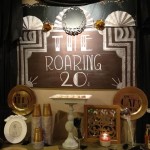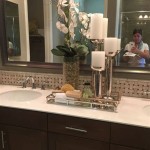Mint Green Dining Room Decor: A Comprehensive Guide
Mint green, a color reminiscent of fresh spring foliage and tranquil waters, offers a refreshing and versatile palette for dining room decor. Its soothing qualities can transform a space into a welcoming and inviting area for meals and gatherings. This article provides a comprehensive guide to incorporating mint green into a dining room, covering key aspects from wall colors and furniture choices to accent pieces and overall design considerations.
Choosing the Right Shade of Mint Green
The success of a mint green dining room hinges on selecting the appropriate shade. Mint green encompasses a spectrum of hues, ranging from pale and pastel-like to richer, more saturated tones. Consider the amount of natural light the dining room receives. Lighter shades of mint green, often with a touch of white or cream, work well in rooms with limited sunlight, creating a brighter and more airy atmosphere. These lighter tones can also make a small dining room feel more spacious. For dining rooms flooded with natural light, deeper mint greens, with a hint of gray or blue, can introduce depth and visual interest without overwhelming the space.
Furthermore, the desired mood should influence the shade selection. A soft, barely-there mint green creates a serene and calming ambiance, ideal for formal dining or relaxing family meals. A more vibrant, slightly bolder mint green adds a touch of energy and playfulness, suitable for hosting social gatherings or for a more contemporary aesthetic. Consider testing different paint swatches in the dining room under various lighting conditions – day and night – to see how the color appears before committing to a final choice. Pay attention to the undertones of the mint green, as some may lean more towards blue while others have yellow undertones. This influences the overall feeling of the space.
Wall Color and Furniture Pairing
The walls serve as the backdrop for the entire dining room design. When using mint green on the walls, the color of the furniture becomes a crucial element. White or cream-colored furniture provides a clean, classic pairing that allows the mint green to shine without appearing cluttered. Wooden furniture, whether light, medium, or dark-toned, complements mint green beautifully, adding warmth and natural textures to the space. Consider incorporating wood dining tables, chairs, or sideboards to create a balanced and inviting environment. For a bolder approach, consider contrasting furniture colors such as navy blue, charcoal gray, or even a muted yellow to create a visually stimulating space, but ensure the contrast is harmonious and does not overwhelm the mint green.
The finish of the furniture also plays a role. Matte finishes contribute to a relaxed and contemporary feel, while glossy finishes create a more formal and refined aesthetic. The overall style of the dining room should influence these choices. If aiming for a modern design, clean lines and minimalist furniture in a combination of white and wood would be a good choice. For a farmhouse style, distressed wood furniture, paired with neutral textiles and decorative elements, would enhance the charm and create a cozy atmosphere. Consider the existing flooring and how that affects the combined appearance.
Incorporating Textiles: Curtains, Rugs, and Table Linens
Textiles provide opportunities to introduce additional colors, patterns, and textures into the dining room. Curtains in a complementary or contrasting color can frame the windows and add visual interest. White or cream-colored curtains allow the mint green walls to remain the focal point, while patterned curtains, featuring floral designs or geometric shapes, add a touch of personality. A rug placed beneath the dining table can define the dining area and add warmth and comfort. Choose a rug that complements the wall color and furniture while also considering the functionality of the dining room. A low-pile rug is ideal for high-traffic areas, while a softer rug can enhance the comfort of the space.
Table linens also offer a significant opportunity to add visual interest. Tablecloths, placemats, and napkins in shades of white, cream, or grey can create a sophisticated and elegant setting. Mint green table linens can accentuate the wall color, creating a cohesive look. Patterns such as stripes, floral prints, or geometric shapes can be incorporated on table linens to add a playful or personalized touch. Layer different textures and patterns for visual depth. Consider using a linen tablecloth combined with cotton napkins or a patterned table runner over a plain tablecloth to create a visually appealing and functional dining experience.
Accent Pieces and Decorative Elements
Accent pieces are essential for completing the dining room design and adding personality. Consider incorporating artwork, mirrors, and decorative objects to enhance the space. Framed prints, abstract paintings, or still-lifes in colors that complement mint green can add visual interest to the walls. A large mirror can create the illusion of more space and reflect light, brightening the room. Decorative objects such as vases, sculptures, or bowls can be displayed on a sideboard, buffet, or dining table to add texture and visual interest. Incorporate metallic accents, such as gold or silver picture frames, candle holders, or serving pieces, to add a touch of sophistication and complement the coolness of the mint green.
Plants and greenery bring life and freshness to a mint green dining room. Potted plants, such as ferns, succulents, or herbs, can be placed on the dining table or shelves to add a natural element. Floral arrangements in vases can also add color and fragrance. Consider the size and scale of the accent pieces relative to the dining room. Avoid overcrowding the space with too many objects. Use natural light to your advantage. Accessorize the space thoughtfully, ensuring each piece contributes to the overall design and ambiance. Consider the style of the rest of the decor when picking accent pieces.
Lighting Considerations
Lighting impacts the overall ambiance of a dining room. A combination of ambient, task, and accent lighting is ideal. Ambient lighting provides general illumination, such as a ceiling fixture or chandelier, while task lighting illuminates specific areas, such as the dining table. Accent lighting highlights artwork or architectural features, such as wall sconces or recessed lighting. When choosing a chandelier or pendant light, consider the style of the dining room and the size of the table. A statement chandelier can be a focal point, while a more subtle pendant light can provide task lighting over the table. Use dimmers on light fixtures to control the brightness and create the desired mood, from a bright space for dining to a softer, more intimate ambiance.

How To Decorate With Mint Green 25 Colors Pair Decor

Decorating With Mint Green Walls Wall Color Home

How To Decorate With Mint Green 25 Colors Pair Decor

8 Trendy Ideas To Incorporate Mint Green Into Your Room Decorations Housing News

These Gorgeous Color Schemes Prove Green Is More Than An Accent Home Decor Eat In Kitchen

Under A Paper Moon Green Rooms Mint Walls

How To Decorate With Mint Green 25 Colors Pair Decor

12 Ways To Decorate With The Color Mint Green Dining Room Design Chairs Upholstered

8 Trendy Ideas To Incorporate Mint Green Into Your Room Decorations Housing News
A Pink Green Dining Room Oh Joy







